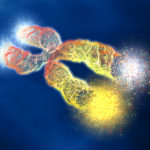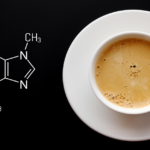Central to decades of research covering the science of aging are telomeres. They play a significant role in the process of aging. Telomeres are the tiny caps found at the end of each strand of DNA meant to protect our chromosomes. Each time a cell divides the telomeres at the end get shorter. Continual cell division makes telomeres get too short causing the cell to degenerate and no longer replicate [1].
For years scientists have been looking for answers on whether the elimination of intrinsic instigators driving age-associated degeneration can be reversed. These instigators include progressively damaged genomes, which happens from telomeres shortening over time [2].
Capping decades of research, a new Harvard study on dyskeratosis congenita and other telomere diseases reveal which cells age prematurely and how they could potentially prevent this process. They discovered the gene PARN that has a role in the action telomerase function [4].
Telomeres, Telomerase, and Disease
Telomere shortening and loss can provoke muscle atrophy, stem-cell depletion, organ system failure, and impair wound healing. Age is the major risk factor associated with developing chronic medical conditions, the shortening of telomeres contribute majorly to the normal process of aging in healthy humans.
There are also degenerative diseases where telomeres cannot be maintained. Compromised telomere biology disorders (TBDs), such as dyskeratosis congenita, are caused by mutations found in various genes. The underlying cause of TBDs is these mutations that disrupt telomerase formation and function, particularly mutations impacting the TERT and TERC molecules. These two molecules join together to form telomerase, which is a reverse transcriptase enzyme responsible for replenishing terminal chromosomal DNA sequences [2].
TERT is the on/off switch for telomerase activity, and it determines telomerase activity in human stem cells once TERT is expressed. Both TERT and TERC are affected by other genes that regulate telomerase’s action, such as PARN. Recent discoveries of PARN, have indicated it is important for stabilizing TERC. PARN is required for the 3’-end maturation of the telomerase RNA component. Many TBDs are caused by mutations in PARN, this means less TERC which causes a decrease in telomeres and prematurely shortens telomeres [3].

PAPD5 inhibitors restore Telomerase activity
Across the scope of TBDs, there are currently no curative therapies, only treatments available are bone marrow or organ transplants. This new study identified PAPD5 as a destabilizer of TERC, which is an enzyme that opposes PARN causing the premature shortening of telomeres. TBDs are very sensitive to PARN loss of function[3].
The knockdown of PAPD5 increases TERC (figure 1). The research team used CRISPR/Cas9 in various cell types to cause a complete loss in the function of PAPD5. More importantly, they also found that pharmacologic disruption of PAPD5 function yielded TERC maturation and telomere lengthening. This is the first example of small-molecule modulation of a long ncRNA, which provides specificity to its therapeutic effects.
This new study is an exciting first step toward finding curative therapies for telomere biology disorders (TBDs). They demonstrated that pharmacological manipulation of the ncRNA biogenesis pathway restores telomere maintenance in TBD, which guides telomere research toward a promising future.
References
- Bertuch, A. A. (2016). The molecular genetics of the telomere biology disorders. RNA Biology, 13(8), 696–706. https://doi.org/10.1080/15476286.2015.1094596
- Jaskelioff, M., Muller, F. L., Paik, J. H., Thomas, E., Jiang, S., Adams, A. C., Sahin, E., Kost-Alimova, M., Protopopov, A., Cadiñanos, J., Horner, J. W., Maratos-Flier, E., & Depinho, R. A. (2011). Telomerase reactivation reverses tissue degeneration in aged telomerase-deficient mice. Nature, 469(7328), 102–106. https://doi.org/10.1038/nature09603.
- Moon, D. H., Segal, M., Boyraz, B., Guinan, E., Hofmann, I., Cahan, P., Tai, A. K., & Agarwal, S. (2015). Poly(A)-specific ribonuclease (PARN) mediates 3′-end maturation of the telomerase RNA component. Nature genetics, 47(12), 1482–1488. https://doi.org/10.1038/ng.3423
- Nagpal, N., Wang, J., Zeng, J., Lo, E., Moon, D. H., Luk, K., … Agarwal, S. (2020). Small-Molecule PAPD5 Inhibitors Restore Telomerase Activity in Patient Stem Cells. Cell Stem Cell. https://doi.org/https://doi.org/10.1016/j.stem.2020.03.016.




